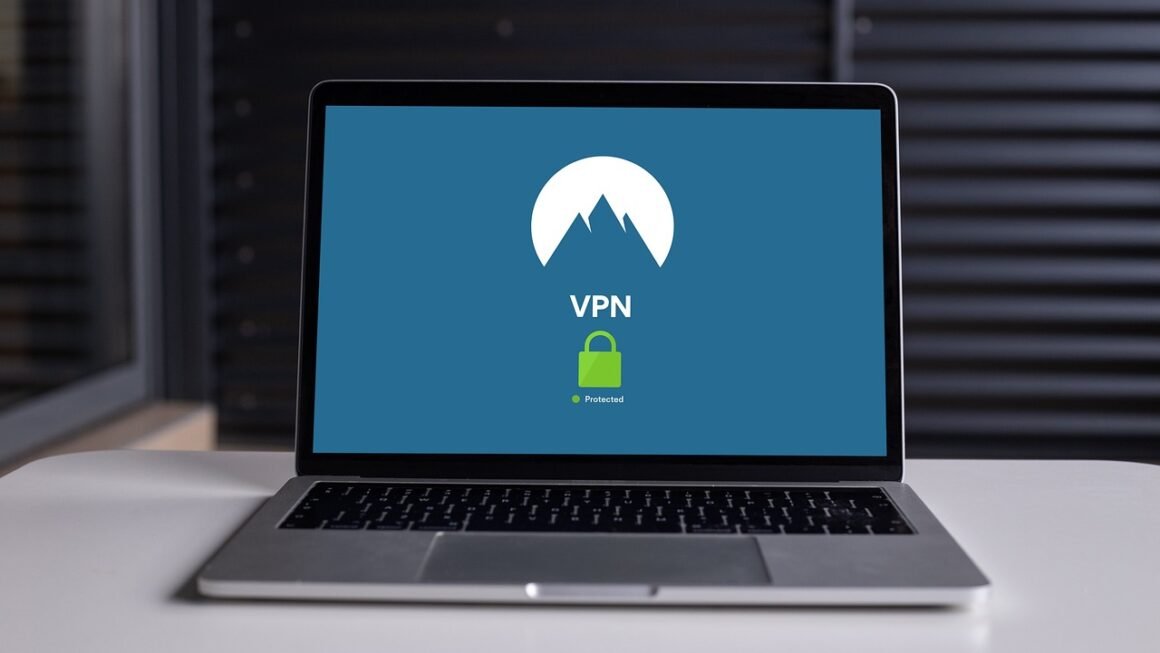Ethical hacking, often misunderstood as malicious activity, is actually a critical component of modern cybersecurity. It involves using hacking techniques for defensive purposes, identifying vulnerabilities in systems and networks before malicious actors can exploit them. This proactive approach is essential for organizations looking to protect their data, maintain their reputation, and ensure business continuity. Let’s dive into the world of ethical hacking and explore its vital role in today’s digital landscape.
What is Ethical Hacking?
Definition and Scope
Ethical hacking, also known as penetration testing or white-hat hacking, is the practice of legally and ethically attempting to penetrate a system or network to identify security vulnerabilities. The goal is to simulate a real-world attack to uncover weaknesses that malicious hackers could exploit.
- Legality: Ethical hacking is only ethical if it’s conducted with the explicit permission of the system owner or organization.
- Ethical Considerations: Ethical hackers adhere to a strict code of conduct, respecting privacy, avoiding damage, and fully disclosing vulnerabilities.
- Scope: The scope of an ethical hacking engagement is clearly defined beforehand, outlining the systems to be tested and the testing methods to be used.
The Difference Between Ethical and Malicious Hacking
The key difference lies in the intent. While malicious hackers aim to cause harm, steal data, or disrupt operations, ethical hackers strive to improve security by identifying and reporting vulnerabilities.
- Purpose: Ethical hacking aims to enhance security; malicious hacking aims to exploit it.
- Authorization: Ethical hacking is authorized; malicious hacking is unauthorized.
- Impact: Ethical hacking leads to improved security measures; malicious hacking leads to data breaches and system failures.
The Importance of Ethical Hacking
In today’s interconnected world, cybersecurity threats are constantly evolving. Ethical hacking provides a proactive approach to address these threats.
- Vulnerability Identification: Uncovers weaknesses before malicious actors can exploit them.
- Risk Mitigation: Helps organizations understand and mitigate their security risks.
- Compliance: Supports compliance with industry regulations and standards (e.g., HIPAA, PCI DSS, GDPR).
- Cost Savings: Prevents costly data breaches and system downtime. According to IBM’s 2023 Cost of a Data Breach Report, the global average cost of a data breach reached $4.45 million.
The Ethical Hacking Process
Reconnaissance
This is the information gathering phase. The ethical hacker collects as much information as possible about the target system or network, similar to how a detective gathers clues.
- Passive Reconnaissance: Gathering information without directly interacting with the target (e.g., searching public databases, social media profiles, and company websites).
- Active Reconnaissance: Directly interacting with the target to gather information (e.g., scanning network ports, probing for vulnerabilities).
- Example: Using tools like `whois` to find domain registration information or `Shodan` to identify open ports and services on a target system.
Scanning
The scanning phase involves using tools to identify open ports, services, and potential vulnerabilities on the target system.
- Port Scanning: Identifying open ports on a target system to understand which services are running.
- Vulnerability Scanning: Using automated tools to identify known vulnerabilities in software and systems.
- Network Mapping: Creating a visual representation of the target network to understand its structure and topology.
- Example: Using `Nmap` to scan a target network for open ports and identify the operating system and running services.
Gaining Access
This phase involves exploiting identified vulnerabilities to gain unauthorized access to the target system.
- Exploitation: Using known exploits to take advantage of vulnerabilities.
- Password Cracking: Attempting to crack passwords using various techniques (e.g., brute-force attacks, dictionary attacks).
- Social Engineering: Manipulating individuals into providing sensitive information or access.
- Example: Using Metasploit to exploit a known vulnerability in a web application to gain access to the underlying server.
Maintaining Access
Once access is gained, the ethical hacker may attempt to maintain persistent access to the system for further analysis.
- Backdoors: Installing backdoors to allow for future access.
- Rootkits: Concealing malicious activity and maintaining root-level access.
- Example: Installing a reverse shell on a compromised system to maintain persistent access even if the initial vulnerability is patched.
Covering Tracks
The final phase involves removing evidence of the ethical hacking activity to avoid detection and ensure that the system is returned to its original state.
- Log Cleaning: Removing or modifying system logs to hide activity.
- Artifact Removal: Removing any files or tools that were used during the hacking process.
- Example: Clearing system logs to remove traces of the ethical hacking activity. Note that this is a very sensitive area and must be done with great care to avoid disrupting legitimate system operations.
Types of Ethical Hacking
Web Application Hacking
Focuses on identifying vulnerabilities in web applications, such as cross-site scripting (XSS), SQL injection, and cross-site request forgery (CSRF).
- XSS: Injecting malicious scripts into web pages viewed by other users.
- SQL Injection: Injecting malicious SQL code into database queries to gain unauthorized access to data.
- CSRF: Tricking users into performing actions they did not intend to perform.
- Example: Testing a web application for SQL injection vulnerabilities by entering malicious SQL code into input fields.
Network Hacking
Focuses on identifying vulnerabilities in network infrastructure, such as routers, switches, and firewalls.
- Port Scanning: Identifying open ports and services on network devices.
- Network Sniffing: Capturing and analyzing network traffic to identify sensitive information.
- Wireless Hacking: Identifying vulnerabilities in wireless networks, such as weak passwords or outdated encryption protocols.
- Example: Using Wireshark to capture and analyze network traffic to identify potential security vulnerabilities.
System Hacking
Focuses on identifying vulnerabilities in operating systems and system software.
- Privilege Escalation: Exploiting vulnerabilities to gain elevated privileges on a system.
- Password Cracking: Attempting to crack user passwords to gain access to systems.
- Buffer Overflow: Exploiting vulnerabilities in software to overwrite memory and execute malicious code.
- Example: Using a privilege escalation exploit to gain root access on a Linux system.
Mobile Hacking
Focuses on identifying vulnerabilities in mobile devices and applications.
- Mobile Application Security: Analyzing mobile applications for vulnerabilities such as insecure data storage, code injection, and insecure communication.
- Device Security: Assessing the security of mobile device hardware and software, including operating system vulnerabilities and malware.
- Example: Analyzing a mobile application for insecure data storage by examining the application’s files and databases.
Tools and Techniques
Popular Hacking Tools
A variety of tools are used in ethical hacking, each with its own strengths and capabilities.
- Nmap: A powerful network scanner used for discovering hosts and services on a network.
- Metasploit: A penetration testing framework used for exploiting vulnerabilities and developing custom exploits.
- Wireshark: A network protocol analyzer used for capturing and analyzing network traffic.
- Burp Suite: A web application security testing tool used for identifying vulnerabilities in web applications.
- Kali Linux: A Linux distribution specifically designed for penetration testing and security auditing. It comes pre-loaded with many tools already discussed.
Common Hacking Techniques
Ethical hackers use a variety of techniques to identify and exploit vulnerabilities.
- Social Engineering: Manipulating individuals into divulging sensitive information or granting access to systems.
- Phishing: Sending fraudulent emails or messages to trick users into providing sensitive information.
- Brute-Force Attacks: Attempting to guess passwords by trying all possible combinations.
- Denial-of-Service (DoS) Attacks: Overwhelming a system with traffic to make it unavailable to legitimate users.
Staying Updated
The cybersecurity landscape is constantly evolving, so it’s crucial for ethical hackers to stay up-to-date with the latest threats and vulnerabilities.
- Industry Certifications: Pursuing certifications such as Certified Ethical Hacker (CEH), Offensive Security Certified Professional (OSCP), and CompTIA Security+ to demonstrate knowledge and skills.
- Conferences and Training: Attending cybersecurity conferences and training events to learn about the latest trends and techniques.
- Online Resources: Staying informed by reading cybersecurity blogs, news articles, and research papers.
Conclusion
Ethical hacking is an indispensable practice for organizations striving to maintain robust cybersecurity defenses. By proactively identifying and addressing vulnerabilities, ethical hackers help protect sensitive data, prevent costly breaches, and ensure business continuity. As the threat landscape continues to evolve, the demand for skilled ethical hackers will only increase, making it a vital and rewarding career path for those passionate about cybersecurity. Organizations should invest in ethical hacking services to enhance their security posture and stay one step ahead of malicious actors.



